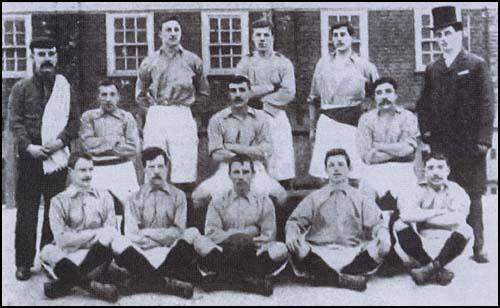When Thames Ironworks FC were evicted from their first home at Hermit Road in late 1896, the new Club’s owners had to find them a suitable ground to complete their inaugural London League season.
After playing five matches away from home between October 1896 and March 1897, Thames Ironworks and Shipbuilding Company managing director and Club Chairman Arnold Hills leased a temporary home at Browning Road, a couple of miles away in East Ham.
Thames Ironworks' first match at their new home came on 6 March 1897, when the hosts scored a 3-2 London League win over Ilford. A crowd of 1,500 spectators turned out to see Charles Read score twice and Butterworth once to secure a winning start.
However, the new situation was not ideal, as explained by future Ironworks player and West Ham United manager Syd King in his 1906-published ‘Book of Football’.
"For some reason, not altogether explained, the local public at this place did not take kindly to them and the records show that Browning Road was a wilderness both in the manner of luck and support," wrote King.
With the Club's presence never likely to be permanent, Hills earmarked a large piece of land in Canning Town and would eventually spend £20,000 on the construction of the huge Memorial Grounds.
On 8 April 1897 came not only Thames Ironworks' final game of the 1896/97 London League season but their last fixture at Browning Road. The match against Barking Woodville ended 1-1, with the hosts’ goal being scored by Scot Andrew Cowie on his own final appearance for the Club.
Perhaps more telling was the attendance, just 600, which was an example of the struggle the Club had in attracting attendances to Browning Road.
Despite the uncertain situation surrounding their home stadium, Ironworks won seven of their 12 league matches to finish second in the table behind champions 3rd Grenadier Guards.
